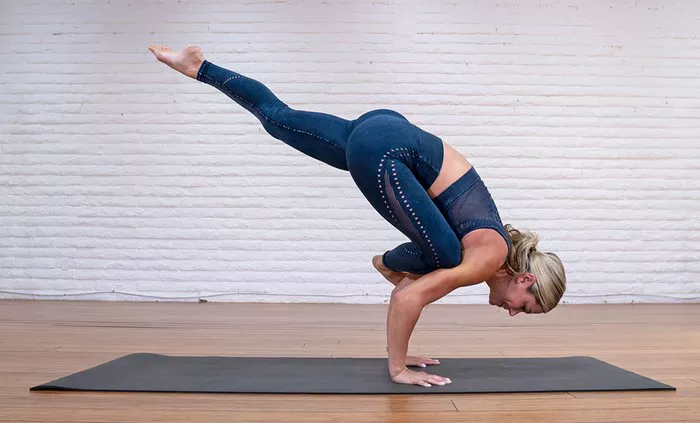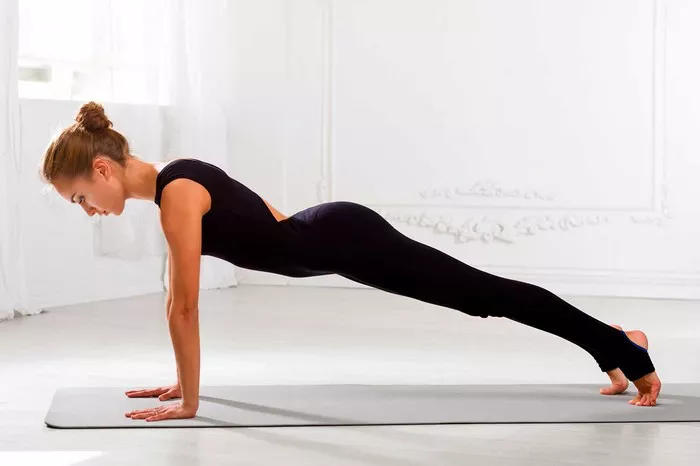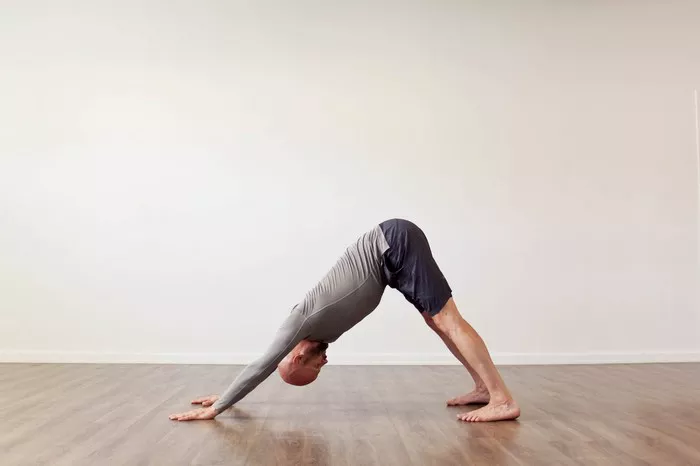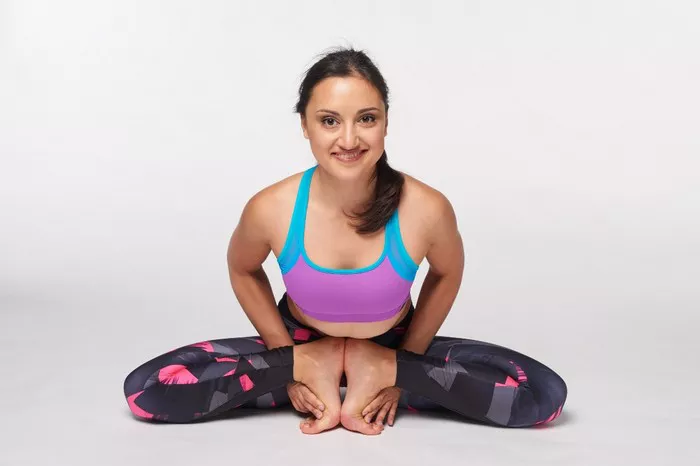The lotus position, known as Padmasana in Sanskrit, is one of the most iconic and revered seated postures in yoga. It’s often associated with meditation, spiritual practices, and a symbol of peace and stillness. For centuries, practitioners of yoga have sat in this posture to enhance focus, flexibility, and inner calm. However, as popular as this position is, it raises a common question: Is lotus position bad for the hips?
In this article, we will explore the mechanics of the lotus position, the potential risks, and the benefits it offers. We will also provide guidance on how to approach this posture safely and alternatives for those who may struggle with it.
Understanding the Lotus Position
In the lotus position, the practitioner sits with both legs crossed, each foot placed on the opposite thigh. The palms rest on the knees, with the spine straight, and the head and neck aligned in a neutral position. This posture requires flexibility in the hips, knees, and ankles, and involves a deep external rotation of the hip joints.
While it may seem like a simple seated pose, the lotus position demands significant mobility in several areas of the body, most notably the hips. It is important to understand that the lotus position is not just about sitting cross-legged; it is a specific alignment that requires a certain degree of physical readiness.
The Hip Anatomy and Lotus Position
To understand whether the lotus position could be harmful to the hips, it is essential to review the anatomy of the hip joint and how it moves during this posture.
The hip joint is a ball-and-socket joint, which means it allows for movement in multiple directions, including flexion, extension, abduction, adduction, and rotation. In the lotus position, the hip joint is forced into external rotation, which means the thigh bone rotates outward relative to the pelvis. Additionally, both knees are brought toward the floor, requiring flexibility in the hip flexors and the surrounding muscles.
This external rotation and the positioning of the legs in the lotus posture demand a certain range of motion in the hip joint. For some practitioners, this range may be easily attainable, but for others, it can be challenging or even uncomfortable.
Potential Risks for the Hips
While the lotus position can offer many benefits, it is important to be mindful of the potential risks, particularly for the hips. Not everyone has the necessary flexibility or mobility to practice the lotus position safely, and forcing the body into this position can lead to injury. Here are some of the potential risks:
1. Strain on the Hip Joint
The deep external rotation of the hip required in the lotus position can place excessive stress on the hip joint. If the hip is not sufficiently flexible or mobile, attempting to force the legs into this position may cause discomfort or even injury to the hip socket. This is particularly a concern for people with limited hip joint mobility or those with a history of hip injuries.
2. Knee and Ankle Stress
Although the focus of this article is on the hips, it’s worth mentioning that the lotus position also places stress on the knees and ankles. The knees, in particular, are pulled into deep flexion and external rotation, which can cause strain, especially if the practitioner has tightness in the hips or legs. The ankle joint is also placed under pressure, which may lead to discomfort or pain if the ankles are not sufficiently flexible.
3. Overstretching
When you attempt the lotus position without proper preparation or warm-up, you risk overstretching the muscles around the hips. Over time, overstretching can weaken the muscles and increase the risk of injury. It’s essential to be cautious and gradual when attempting this posture, particularly for those who are new to yoga or have tight hips.
4. Impact on the Lower Back
The lotus position requires an upright posture with a straight spine, which can be challenging for individuals with lower back tightness or weakness. If the hips are not flexible enough to rotate externally, the lower back may compensate for the lack of hip mobility, leading to a misalignment of the spine and potential strain on the lower back.
5. Pre-existing Conditions
For individuals with pre-existing hip conditions such as hip dysplasia, arthritis, or previous hip surgeries, the lotus position may exacerbate pain or discomfort. In such cases, it’s essential to seek medical advice before attempting this posture.
Benefits of the Lotus Position
Despite the potential risks, the lotus position also offers numerous benefits when practiced correctly. These benefits are largely related to the posture’s ability to promote flexibility, stability, and mental focus. Some of the key benefits include:
1. Enhanced Flexibility
Regular practice of the lotus position helps to improve the flexibility of the hip joints and the muscles surrounding the pelvis. The deep external rotation of the hip improves range of motion and can alleviate tightness in the hips and legs over time. Additionally, the lotus position stretches the groin muscles, which can increase overall flexibility in the lower body.
2. Improved Posture
The lotus position encourages an upright posture with the spine naturally aligned. This helps to cultivate good posture habits and strengthens the muscles of the back and core. A strong and stable spine is important not only for yoga but also for overall daily movement.
3. Mental Focus and Meditation
As one of the most widely practiced meditation postures, the lotus position helps cultivate a sense of stillness and focus. Sitting in this position can assist in grounding the mind and body, making it easier to enter a meditative state. The posture’s symbolism in spiritual traditions also connects practitioners to deeper states of consciousness and mindfulness.
4. Breathing Benefits
The lotus position, when combined with deep breathing practices, can help expand lung capacity and encourage slow, controlled breathing. This can aid in reducing stress, calming the nervous system, and improving mental clarity.
How to Practice Lotus Position Safely
If you are interested in incorporating the lotus position into your practice, there are several tips to ensure that you approach it safely and effectively:
1. Warm Up
Before attempting the lotus position, it is essential to perform a proper warm-up that targets the hips, legs, and lower back. Some effective preparatory poses include supta baddha konasana (reclining bound angle pose), baddha konasana (bound angle pose), and anahatasana (heart-melting pose). These poses help to open up the hips and improve flexibility in a gentle and controlled manner.
2. Use Props for Support
If you find it difficult to sit with the knees on the floor in the lotus position, consider using props such as cushions or blankets. Placing a cushion under the hips or sitting on a yoga block can elevate the pelvis and make the posture more accessible, reducing strain on the hips and knees.
3. Gradual Progression
If you are new to the lotus position or have tight hips, it’s essential to progress gradually. Start with a simple seated cross-legged position, and as your flexibility increases, begin to work towards the lotus position over time. Be patient and don’t rush the process—yoga is about gradual transformation and mindfulness, not forcing your body into a posture before it is ready.
4. Listen to Your Body
It is crucial to listen to your body and respect its limits. If you experience any pain or discomfort in the hips, knees, or lower back while attempting the lotus position, stop immediately. Yoga is about cultivating awareness, and forcing a posture can do more harm than good.
5. Seek Professional Guidance
If you have pre-existing conditions or concerns about practicing the lotus position, seek guidance from an experienced yoga teacher who can provide personalized modifications and adjustments. A skilled instructor can help you refine your technique and ensure that you are practicing safely.
Alternatives to the Lotus Position
If the lotus position is not accessible or comfortable for you, there are several alternative seated postures that offer similar benefits without the same level of strain on the hips and joints. Some of these alternatives include:
Sukhasana (Easy Pose): A simple cross-legged seated position with the spine straight and the hands resting on the knees. This is an excellent alternative for those who find the lotus position too challenging.
Virasana (Hero Pose): Sitting on the shins with the knees bent and the feet tucked under the body. This pose provides a grounding and stable seated position, with less external rotation required in the hips.
Seated Forward Fold (Paschimottanasana): While this is a forward bending posture, it also helps stretch the hips and lower back and can be a gentler option for those with tight hips.
Baddha Konasana (Bound Angle Pose): This seated pose involves bringing the soles of the feet together, allowing the knees to drop toward the floor. It is less intense than the lotus position and still helps open the hips.
Conclusion
In conclusion, the lotus position is not inherently bad for the hips, but it can pose risks for individuals who lack the necessary flexibility, mobility, or have pre-existing hip conditions. It is essential to approach this posture with mindfulness, patience, and proper preparation. If practiced correctly and with adequate preparation, the lotus position can be a deeply beneficial pose for cultivating mental focus, improving flexibility, and enhancing spiritual connection. However, if you experience discomfort or pain, it is crucial to listen to your body and explore alternative seated postures that support your practice in a safe and sustainable manner.
Yoga is about honoring your body, respecting its boundaries, and moving towards greater balance and awareness. As with any posture, the key to benefiting from the lotus position is knowing when to practice and when to rest, always with mindful attention to your body’s unique needs.
Related Topics:





















